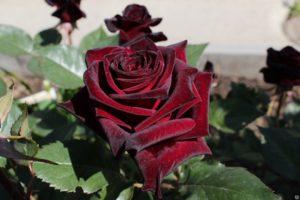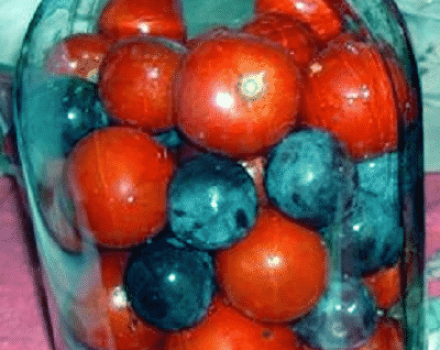Description of the best varieties of stock roses, planting, growing and care in the open field
The stock-rose is nothing but a mallow. Previously, the flower was called that way, but with the advent of an abundance of varieties, from double to dwarf, breeders began to call it a stock-rose. The dignified beauty, which can be seen in many areas, fits perfectly in any garden, looks great in different flower beds and as a single plant.
Description of the plant
Mallow or stockrose is a biennial, less often an annual plant. Its botanical characteristics are as follows:
- The stem is upright, lying. At the beginning of growth it has some pubescence, later, during flowering, it becomes naked. The low plant height is 30 cm, and the largest is 1.5 m.
- The leaves are large, with a carved edge. Arranged symmetrically on the flower, on a long stem.
- The flowers are large, reaching from 15 to 20 cm in diameter. The end of the stem is an inflorescence, where several flowers are located in the axils of the leaves. The flowers have a simple structure, in the form of one row of petals, or complex (double), when the petals are densely filled, which makes them resemble a rose.
- Abundant flowering begins in July and lasts until the end of September.
- After flowering, large flat bulbs or capsules with seeds appear.
- Seeds of medium size, bean-shaped.
- A powerful root system, which cannot be pulled out by hand, also attracts attention. It has one central root, especially thick, and many lateral ones. Such a structure is necessary to sustain a fairly large plant.
It is a common phenomenon when mallow blooms in the second year, but among the varietal variety there are those that bloom in the first year. We should also pay special attention to the color of flowers. It would seem that there is no such shade that the stock-rose would not bloom. From white to almost black. The most fashionable are shades of purple, lilac, violet, yellow, pure white.
A flower from the Malvaceae family is especially resistant to cold and drought. Winters well at low temperatures, without requiring shelter. Unpretentious care. It takes root on any soil, both in areas with abundant lighting, and in the shade.
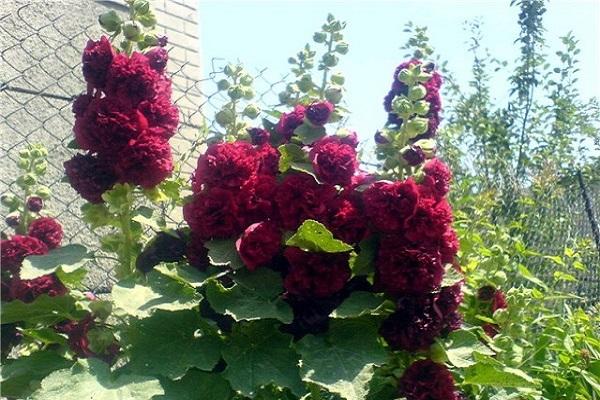
Types, varieties of stock-rose
In its variety, the stock rose has more than 70 species. Below are the most popular and demanded by gardeners.
Annual mallow
An annual flowering plant.Achieved flower height with inflorescence is from 30 to 80 cm and flower diameter is up to 10 cm. Flowers can be single-row five-petalled and double. It is grown to decorate the garden in any flower beds and as a flowering hedge.
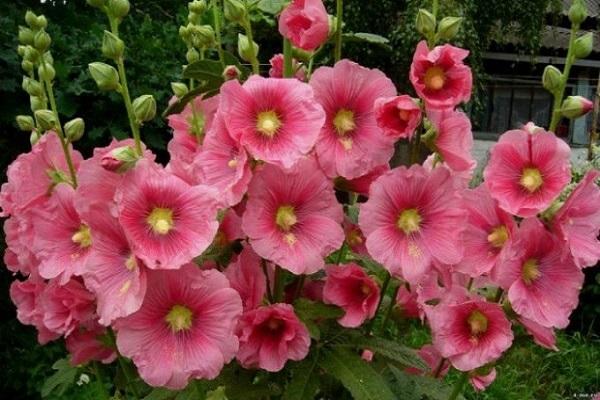
Royal Stock Rose
Mysterious flower with different colors. Its flowers are simply unforgettable, densely stuffed with petals, with heavily cut edges. Plant height 50 cm. Popular with gardeners, as it blooms in the year of sowing. Abundant flowering, from June to autumn. When cutting for bouquet arrangements, all available buds bloom.
Terry stock-rose
A tall, profusely flowering plant up to 250 cm. The flowers are large, represented by corrugated petals, collected in the center, from below the flower is framed by single-row petals. Easily reproduced by dividing the bush and using cuttings. Also sown by seeds, but blooms in the second year of life.
Malva Margarita
Margarita grows up to 2 meters. Its inflorescences are abundantly surrounded by double flowers of lilac color. The diameter of each is up to 12 cm. It is used to decorate gazebos and verandas. Most often planted in the background flower beds with low-growing flowers.
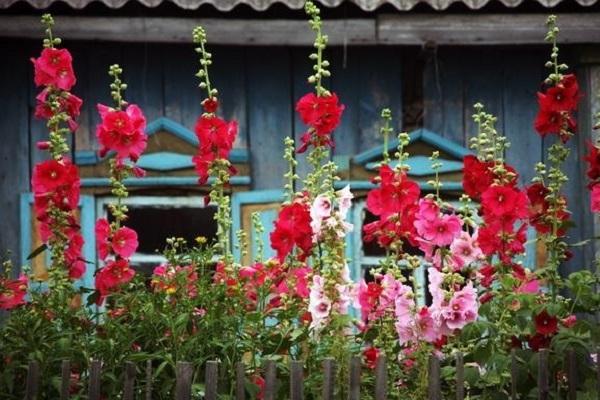
Carnival
Less tall mallow of the Carnival variety. Its height can be up to 1.5 meters. The flowers are compact, fringed, yellow in color. The mallow foliage attracts the eye. The leaves are rather large, dark green in color, with a carved edge and dense pubescence. They are located on high petioles. Carnival is a biennial, sown with seeds, which is why it does not lose varietal characteristics.
Violet
The Violet variety is loved by flower growers because of its dense lilac color. Terry flowers, located in the axils of the leaves on a racemose inflorescence. In one inflorescence there are up to 7 flowers, which bloom very amicably. The process continues from July to late autumn, if the weather is sunny and warm. Plant height up to 2 meters.
Majorette
Low-growing mallow, the height of which reaches 80 cm. Large double flowers are of various colors: yellow, pink, maroon. Flowering amicably, from July to almost the end of October. Inflorescences in cut look beautiful.

Stock-rose Lyubava
Biennial, erect, abundantly flowering plant, 80 cm high. Dense double flowers are collected in long inflorescences that bloom until autumn. Lyubava is beautiful framed by flower beds. Its rich red color attracts the eye of outside flower growers.
Features of growing a plant
It is important to know that mallow seedlings are very fragile and can be easily damaged at the time of transplanting. To avoid this, you need to buy single peat pots that are buried in the soil along with the seedling.
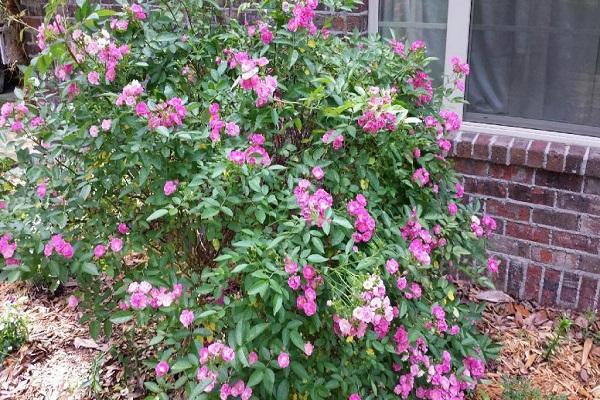
When to plant
You should start planting seeds in April-May. If there is a greenhouse, then the period can be shifted by a month. If the seeds are directly sown in open ground, then you should adhere to the time when the ground is completely warmed up and strong night frosts have passed. The end of May is the best option.
If the seeds are planted in open ground, then the stock-rose will bloom only the next year.
How to prepare seeds
Growing from mallow seeds ensures early flowering and the highest germination. The best seeds are those harvested from a biennial plant or store bought. The preparatory stage is to soak the seeds.
To do this, they are poured into a small bowl and poured with warm water. Leave in this state for 12 hours. During this time, the achenes collect water, then quickly hatch.
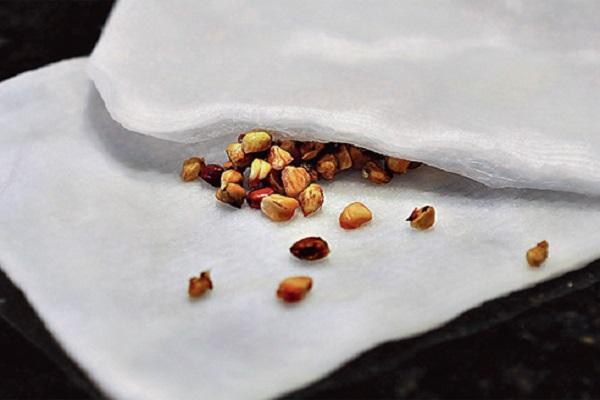
How to sow seeds
The seeding algorithm is as follows:
- Take separate pots or glasses, preferably peat ones. Pour soil into them, the most nutritious soil mixture is suitable, which includes peat, sand, soil, sawdust.
- One seed should be placed in the cups.If containers or boxes for seedlings are taken for planting, then furrows are made into which seeds are laid out at a distance of 1-2 cm. Sprinkle on top with a layer of the remaining mixture 1 cm thick.
- Thoroughly spill and cover with a dark film or plastic cap.
- They are removed to a warm place, but the temperature under the shelter should not exceed 20 degrees.
After about 14 days, seedlings will appear, which must be pulled through so that the plants are stronger and stronger. To do this, pull out weak sprouts, leaving a distance between adjacent 3 cm.
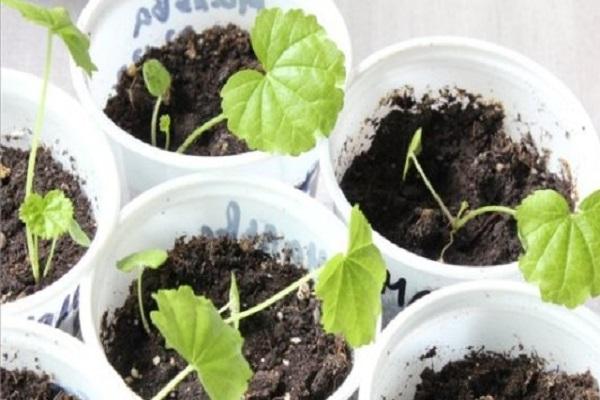
After germination, the film must not be removed immediately. This is done gradually, at first for 10 minutes, and so on, until the plants get used to daylight.
At the time of growth, seedlings should be regularly watered, tempered and ventilated. With the appearance of the third leaf, it is customary to put seedlings in a cool place. If the sprouts begin to stretch, provide additional lighting. The next step in growing seedlings is transplanting into open ground.
Important! Malva does not like dives, so it is worth planting it only with an earthen lump.
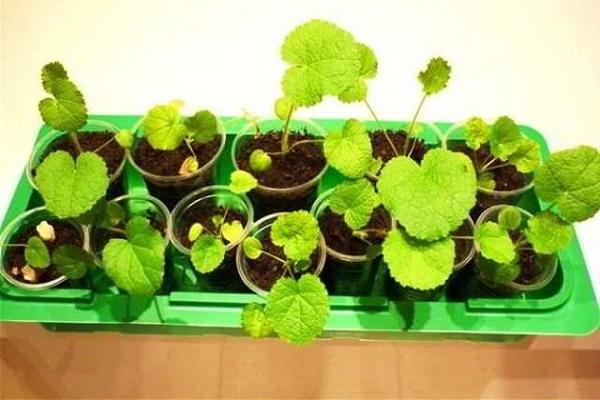
Transplanting seedlings into open ground
In May, they start planting plants in a flower bed. The place of its growth is determined in advance, since later it will not be possible to transplant it:
- They choose a place that is bright and protected from strong winds. Due to the decent height of the plant, the wind can negatively affect the beauty. Mallow will break off, bend.
- Stock-rose does not tolerate shady places. Her growth will be inhibited and flowers will fade.
- The soil must be provided with humus and sand with large pebbles for drainage. In addition, lime should be added to the soil to reduce acidity, compost and sawdust. It is important to remember that the flower does not tolerate heavy clay soils.
- Holes are prepared. Their location depends on the space occupied in the flower bed, but it is worth observing the distance between neighbors from 30 to 60 cm.
- If the seedlings grow in peat pots, they are simply buried along with the container in the garden bed. If the container or pot is plastic, then it is worth transferring the seedling along with the soil into the hole and digging it in.
- Water the seedlings abundantly.
Basically, seedlings are planted in the background of flower beds because of the height. The first plan is not suitable for mallow, as it will obstruct other flowers.
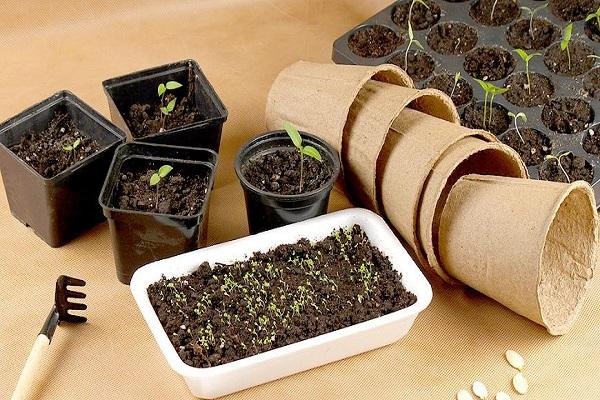
Further care of flowers in the garden
Mallow is an unpretentious plant to care for, but abundant and colorful flowering depends on the quality.
Fertilizing and feeding
The rose stock is fed twice a season: after planting young seedlings and in August. Complex formulations of garden flower dressings, which can be purchased at the store, are suitable.
If the stock-rose is perennial, then once a year, mainly in spring, humus or compost is introduced.
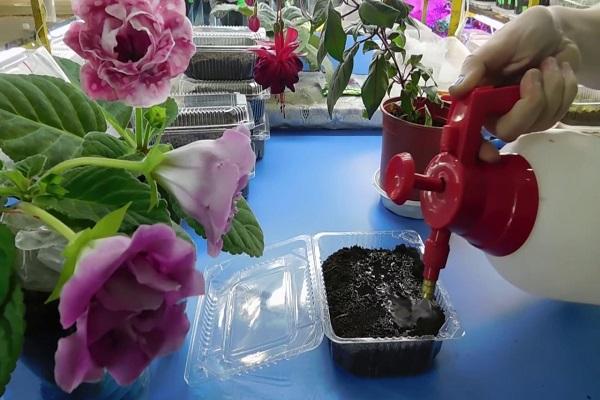
Watering rules
Mallow loves moisture, but excess depresses the flower. Watered no more than once a week under the root, avoiding water getting on the leaves.
Diseases and pests of stock-rose
Despite the growth of the plant and its unpretentiousness, mallow is susceptible to diseases: powdery mildew, rust, nematode damage. Such phenomena occur due to excess humidity, damp and cold weather, as well as as a result of poor lighting.
Of course, it is impossible to prevent the appearance of the disease, but it is possible to process the flower beds. When the first signs of the disease appear, the plant is fed with a solution of fungicides. During the period of rust infection from mallow, it is necessary to cut off the affected leaves and treat with Bordeaux liquid.
If harmful inhabitants appear on the flowers, then the plant should be sprayed with an insecticide solution.

Application in landscape design
With the help of mallow or stock-roses, they decorate the garden. Looks harmoniously on flower beds all summer. In addition to exquisite flowers, the flowerbed is decorated with large foliage.Use a group planting, in the form of walls, hedges, to divide the garden into zones.
Rows of mallow are very good at masking outbuildings on the site. They can be planted under tall trees, along with other perennials, but slightly lower in height. You can play with shades of colors, planting annual flowers in the background. The main thing is fantasy.
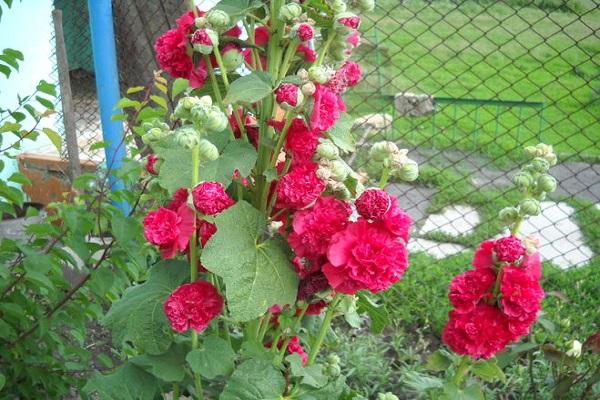
What is the difference between mallow and stock rose?
Stock-rose and mallow are one and the same. Only the word mallow is more common among the people. The stock-rose belongs to the genus Malvovye. There are perennial, biennial and annual subspecies.
Stock-rose is an unpretentious, abundantly flowering plant. Flowers can be seen from June to September. Mainly grown as seedlings for early flowering. After landing on the street, the crop is provided with minimal maintenance. To achieve colorful blooms, it is enough to choose the right place with good lighting, away from the prevailing winds. Then the flower beds will smell fragrant with double and single-layer flowers of all kinds of colors.

